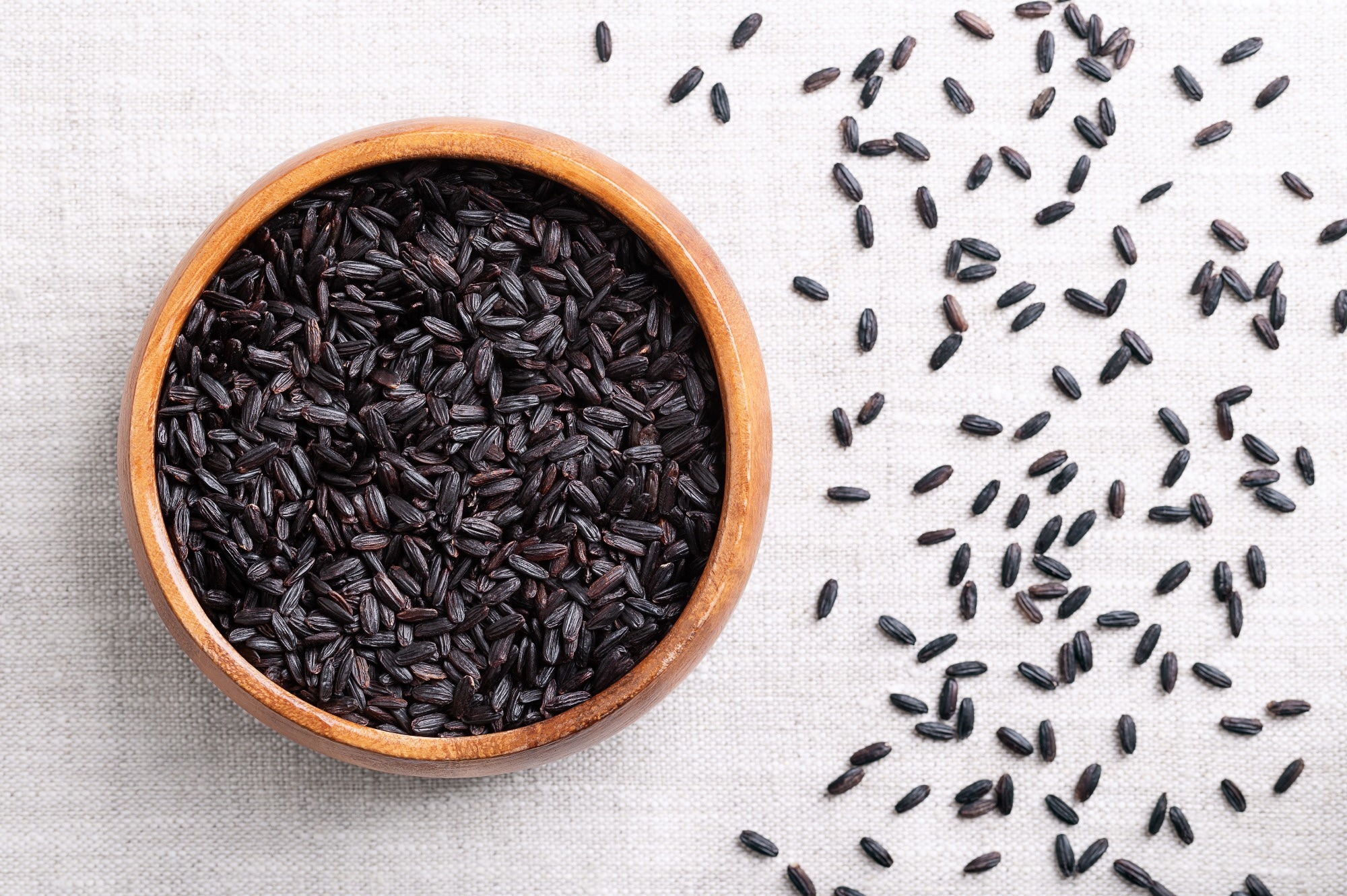In an evolving health landscape, emerging research continues to highlight concerns that could impact everyday wellbeing. Here’s the key update you should know about:
Once reserved for emperors, black rice is making a comeback as a natural way to boost antioxidants, support metabolism, and power a new generation of healthy, plant-based foods.
Review: Black rice as the emerging functional food: bioactive compounds, therapeutic potential and industrial applications. Image Credit: Peter Hermes Furian / Shutterstock
In a recent study published in the journal Frontiers in Nutrition, researchers reviewed the health benefits, industrial applications, and therapeutic potential of black rice (Oryza sativa L.).
Global Dietary Dependence on Rice
About half of the global population relies on rice as a basic food source. Rice is cultivated in more than 100 countries and serves as the primary staple food in at least 15 countries in the Pacific and Asia, 10 countries in the Caribbean and Latin America, and one country in North Africa, as well as in seven countries in sub-Saharan Africa. In Asia, nearly two billion people derive 60 to 70% of their daily caloric intake from rice.
Black Rice Identity and Study Scope
Black rice, also known as forbidden rice, purple rice, imperial rice, and paradise rice, is rich in micronutrients and antioxidants, with anthocyanin levels exceeding those in blueberries. The need for better food options to support the growing population has been a key factor driving demand for plant-based foods. In the present study, researchers summarized the health benefits, industrial applications, and therapeutic potential of black rice.
Nutrient Density and Bioactive Profile
Black rice bran comprises more than 80% of the bioactive compounds, and studies have reported that the bran is responsible for the nutritional benefits of black rice. Nutritional analyses have shown that, in addition to macronutrients, black rice contains essential amino acids (e.g., tryptophan and lysine), minerals, and vitamins. Its lipid composition is characterized by approximately 36% oleic acid, 34% linoleic acid, and 20% palmitic acid.
Black rice contains substantial amounts of zinc, selenium, and iron, which are essential for the functioning of antioxidant enzymes. It also contains B-complex vitamins, vitamin E, and β-carotene. Phenolic compounds in black rice include quercetin, ferulic acid, rutin, syringic acid, and p-coumaric acid. Furthermore, tocopherols and γ-oryzanol are abundant in the bran, with γ-oryzanol concentrations estimated at approximately 100 to 200 mg/kg. Germination also increases γ-aminobutyric acid (GABA) levels, further enhancing the nutritional value of black rice.
Glycemic Control and Antidiabetic Mechanisms
The antidiabetic effects of black rice have been attributed to the inhibition of carbohydrate-hydrolyzing enzymes and suppression of intestinal glucose transporters, which alleviate postprandial glucose spikes. Resistant starch in black rice amplifies these effects by enhancing insulin sensitivity and decelerating carbohydrate digestion. Studies have reported improvements in glucose homeostasis in rats with diabetes following the administration of black rice extracts (BRE).
Cholesterol, Antioxidants, and Bioavailability Limits
Furthermore, anthocyanins in black rice have been found to enhance fecal sterol excretion and inhibit cholesterol absorption, resulting in approximately a 22% decrease in low-density lipoprotein cholesterol in animal models. Studies on rats have reported that cyanidin-3-glucoside (C3G), an anthocyanin found in black rice, enhances superoxide dismutase activity, inhibits lipid peroxidation, and induces a hypoglycemic effect. However, the review notes that anthocyanin bioavailability in humans is generally low, which may limit the translation of these effects to clinical outcomes.
Neuroprotection, Antiviral, and Anti-Metastasis
Anthocyanin fractions from black rice bran were found to protect neuronal cells from endoplasmic and oxidative stress induced by amyloid-beta. One study reported that anthocyanins mitigated cytokine storms caused by the spike protein of severe acute respiratory syndrome coronavirus 2 (SARS-CoV-2) in lung cell models. The anti-metastatic properties of C3G and peonidin-3-glucoside, the two primary anthocyanins in black rice, have also been well documented.
Processing Effects and Food Applications
Black rice processing influences the degradation or preservation of its bioactive compounds. A comprehensive metabolomics study examined the changes in metabolites in black rice following germination, milling, and exposure to high pressure and temperature. It noted that germination increased γ-aminobutyric acid (GABA), phenolic compounds, and γ-oryzanol, while milling reduced anthocyanins and phenolic compounds.
Conversely, pressure heat treatment was linked to microbiological safety. Other studies have found that approximately 4% polishing during milling reduces anthocyanin content by 50-90%. Furthermore, post-harvest sprouting, ultraviolet (UV) irradiation, and fermentation may partially increase the levels of bioactive compounds. Enzymatic acylation was found to enhance antioxidant capacity and stabilize anthocyanin levels in black rice.
Incorporating anthocyanin-enriched BRE into the coatings of extruded snacks can prolong their shelf life. Using black rice flour instead of wheat flour for bread baking has been reported to decrease glycemic index and enhance antioxidant capacity. Similarly, using black rice flour in pasta increases the dietary fiber content and reduces the glycemic index, while incorporating it into noodles diminishes oil absorption during frying.
Conclusions and Evidence Gaps
Taken together, black rice is a culturally significant, nutrient-dense functional food that contains substantial levels of minerals, anthocyanins, dietary fiber, phenolic compounds, and resistant starch. These compounds show potential to help regulate blood sugar levels, enhance brain function and heart health, and reduce oxidative stress and inflammation. However, the human clinical evidence remains limited and mixed, with some short-duration trials showing benefits to body composition and others reporting no changes in lipid levels, indicating the need for adequately powered, longer-term, standardized, randomized controlled trials before drawing firm conclusions.
The authors also highlight practical challenges, including low crop yield, high production costs, and water-intensive cultivation, which must be addressed to ensure sustainable scaling of black rice as a functional food crop. Black rice is also an excellent ingredient in the food industry, including beverages, functional and gluten-free snacks, baked foods, and colorants.
Journal reference:
- Javed, M., Jawid, J., Zafar, S., et al. (2025). Black rice as the emerging functional food, bioactive compounds, therapeutic potential, and industrial applications. Frontiers in Nutrition, 12, 1705983. DOI: 10.3389/fnut.2025.1705983. https://www.frontiersin.org/journals/nutrition/articles/10.3389/fnut.2025.1705983/full
